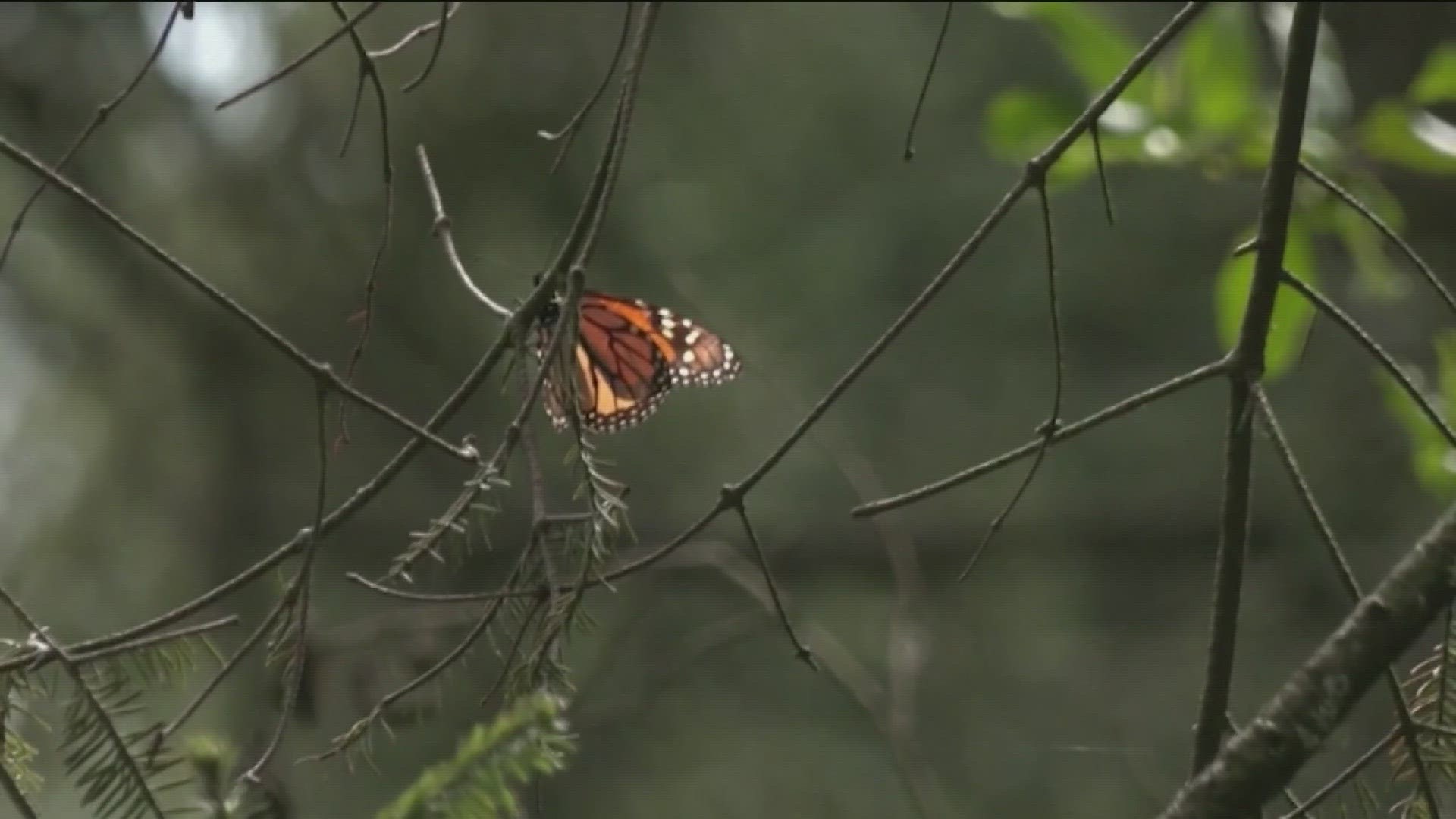ST PAUL, Minn. — Eastern monarch butterflies are surveyed every winter, starting in December, and a World Wildlife Fund Mexico report released Wednesday shows a steep decline in their population.
Eastern monarchs are from areas east of the Rocky Mountains, like Minnesota.
"The most consistent way that we have of measuring the population is at their overwintering sites in Mexico or along the coast of California, where the monarchs are clustered into this pretty small geographic region," explained Wendy Caldwell, executive director of Monarch Joint Venture, a national nonprofit based in St. Paul.
The report shows the population of eastern monarchs located in Mexico's oyamel fir forests this winter dropped 59.3% from the previous year. It's also the first time since the 2013-2014 season, a decade ago, that the population has occupied less than 1 hectare of the surveyed area.
"It's always hard to hear when the population declines," Caldwell said. "Compared to the historic highs of around 18 or above 18 hectares, that's a pretty significant drop … given that the population was already lower than we like to see it."
Migratory monarchs aren't protected under the U.S. Fish and Wildlife Service's Endangered Species Act, but they are candidates for it, which means they still need support.
Caldwell says researchers believe severe drought conditions are negatively affecting their habitat and consequently their population.
"The best thing we can do for monarchs is to plant habitat, and that's milkweed," Caldwell said. "That's the host plant, the only thing that monarch caterpillars can eat … We can put it in our gardens or natural areas, and the other important habitat consideration is wildflowers … Early spring all the way into the late fall, as monarchs are migrating, we want to have continuous bloom throughout that time period."
The Minnesota DNR also provided information Thursday on what Minnesotans can do to help grow the monarch population:
- Plant native flowering plants, including milkweeds. There are over a dozen species of milkweed native to Minnesota!
- Minimize pesticide use in your lawn and garden.
- Participate in community science projects that keep track of monarchs, like the Monarch Larva Monitoring Project from Monarch Joint Venture.
- We do not endorse rearing monarchs (particularly in large quantities), as captive monarchs have poorer survival than monarchs that remain wild.
Watch more local news:
Watch the latest local news from the Twin Cities and across Minnesota in our YouTube playlist:

